American brand Coleman is a stalwart of the camping scene, its products are a familiar sight on campsites on either side of the pond. Despite still having a logo that looks as though it was designed before I was born, and a functional rather than flashy website, Coleman’s gear has thankfully moved with the times, as evidenced by its excellent Supercomfort Self-Inflating Sleeping Mat.
There are four members of the Supercomfort family: two double mattress and two single mattresses, with one of each being 12cm thick and the others being 7.5cm thick.
I was testing the 7.5cm Double, a rectangular self-inflating mattress for camping couples or solo campers looking for that bit more space. With an R-value of 7.8, it’s a highly insulating option that can be used all year round, but is it one of the very best camping mattresses around?
Pros
- Lovely flat and firm sleeping surface
- Suitable for year-round camping
- Inflation can be finished with pump sack
- Two valves make for quick inflation and deflation
- Lighter than most of the competition
Cons
- Not as easy to pack away as some
- No mention of recycled materials
| RRP: | £190 |
| Dimensions: | 200 x 128cm |
| Thickness: | 7.5cm |
| Packed size: | 66 x 36 x 36cm |
| Weight: | 4.1kg/9lb 0.6oz |
| R-value: | 7.8 |
Both the 7.5cm and 12cm Supercomfort doubles feature a pair of cyclone valves for speedy self-inflation and deflation, as well as a stuff sack that ingeniously also functions as an effective pump sack.
This allows the user to easily finish the inflation process and achieve the desired firmness. Once inflated, I was really impressed with how flat it felt, with only very subtle ridges running horizontally across the sleeping platform.
With an RRP of £189.99, the 7.5cm version is around £30 cheaper than the 12cm mat and you can usually find it for less than this too.
As this is a quality mattress that you can camp with all year round, I think this represents decent value for those looking to increase the comfort factor of their car camping trips or festival weekends (if that's you, check out our list of the best festival tents, too).
Comfort
You’d perhaps think that a thickness of 7.5cm wouldn’t be enough to achieve the comfort and insulation needed for an extended camping trip, especially as many camping mattresses are much thicker. However, when fully inflated, the Supercomfort is a gloriously firm sleeping platform, while its polyester and nylon face fabric is soft to the touch.
Like the Berghaus Air Double Self-Inflating Mattress, horizontal foam ridges run across the mat. However, in this case they’re much more understated and are barely perceptible when lying across them. The result is a notably flat feeling sleeping pad with none of the gripes about ridges that others suffer from.
Instead, it felt as though my weight was distributed evenly across its surface, which makes for a lovely sleeping experience.
Materials, shape and size
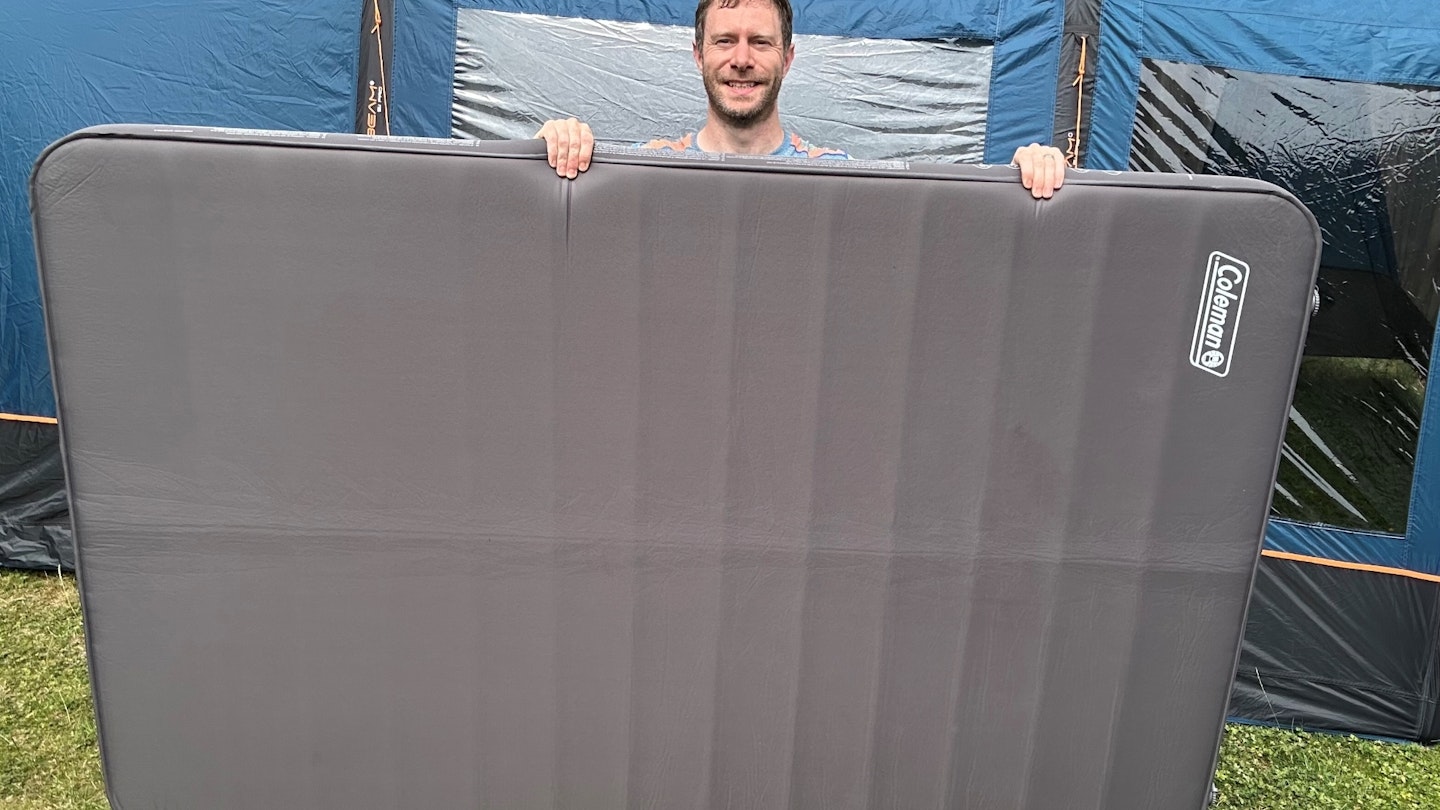
A mixture of nylon and polyester is used in the surface of the pad, which achieves a fine balance: it’s soft to the touch while being durable enough to guard against abrasion or puncture.
This face fabric is relatively hardwearing but doesn’t boast what Coleman calls ‘Greater Puncture Resistance’, so don’t go standing on it with your crampons on. I’m happy to say that I had no issues with durability on test – and, no, I didn’t stand on it with my crampons on.
The meat in the sandwich between the face fabrics is a polyester foam. It’s this internal foam structure that expands to enable self-inflation, drawing air inward when the valve is open. Once inflated, the foam also provides support and stability, which is why these kinds of self-inflating mattresses are arguably more comfortable to sleep on than a traditional air bed.
Its underlying structure is hinted at by the horizontal ridges that run across the width of the mat, though these are more subtle than on some of the competition. There are unavoidable crease marks running vertically through the centre of the mat too, due to the way it folds away when not in use.
In an ideal world, I’d want to be hearing lots about recycled materials and recyclability when dealing with a product in this day and age. However, there’s none of that here, which seems a shame for what is otherwise such a great product.
There’s nothing revolutionary about the shape of the Supercomfort. It’s the usual double-bed-sized rectangle with rounded corners. Measuring 200x128cm, it’s long enough to suit people up to around 6ft 6in (198cm).
Inflation and deflation
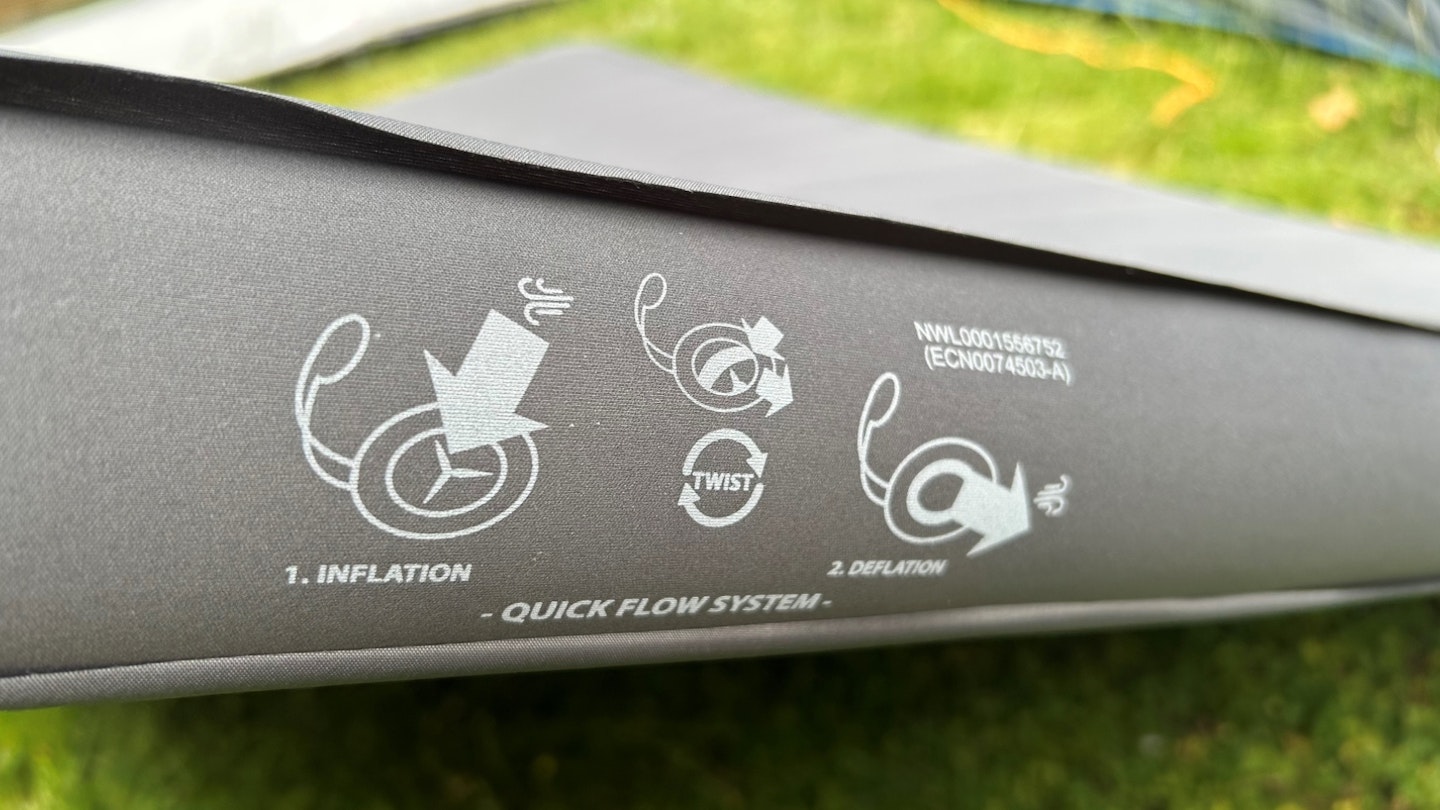
The Supercomfort is a self-inflating mattress – all I had to do was open up the valve and wait for this ingenious design to do most of the work. First dreamed up by American brand Therm-a-Rest in 1972, these days many backpacking and car camping mattresses boast such a design.
The Supercomfort has the same innovative cyclone valve as the Berghaus Air Double Self-Inflating Mat, only in this case there’s two of them. This makes inflation and deflation all the quicker.
The valve, hidden behind a screw cap, comprises a circular toggle that can be turned from the inflate setting to the deflate setting. A directional screen only lets air travel in one direction and whether or not that’s in or out depends on which way you’ve got the toggle turned.
With the valve set to inflate, air is drawn into the pad and the foam inside expands, thus pumping more air inward. The fact that there are two valves for air to enter makes the whole self-inflation process relatively speedy. Coleman recommends leaving it for about 10 minutes, but I found the mat actually achieved a decent level of inflation in even less time than this.
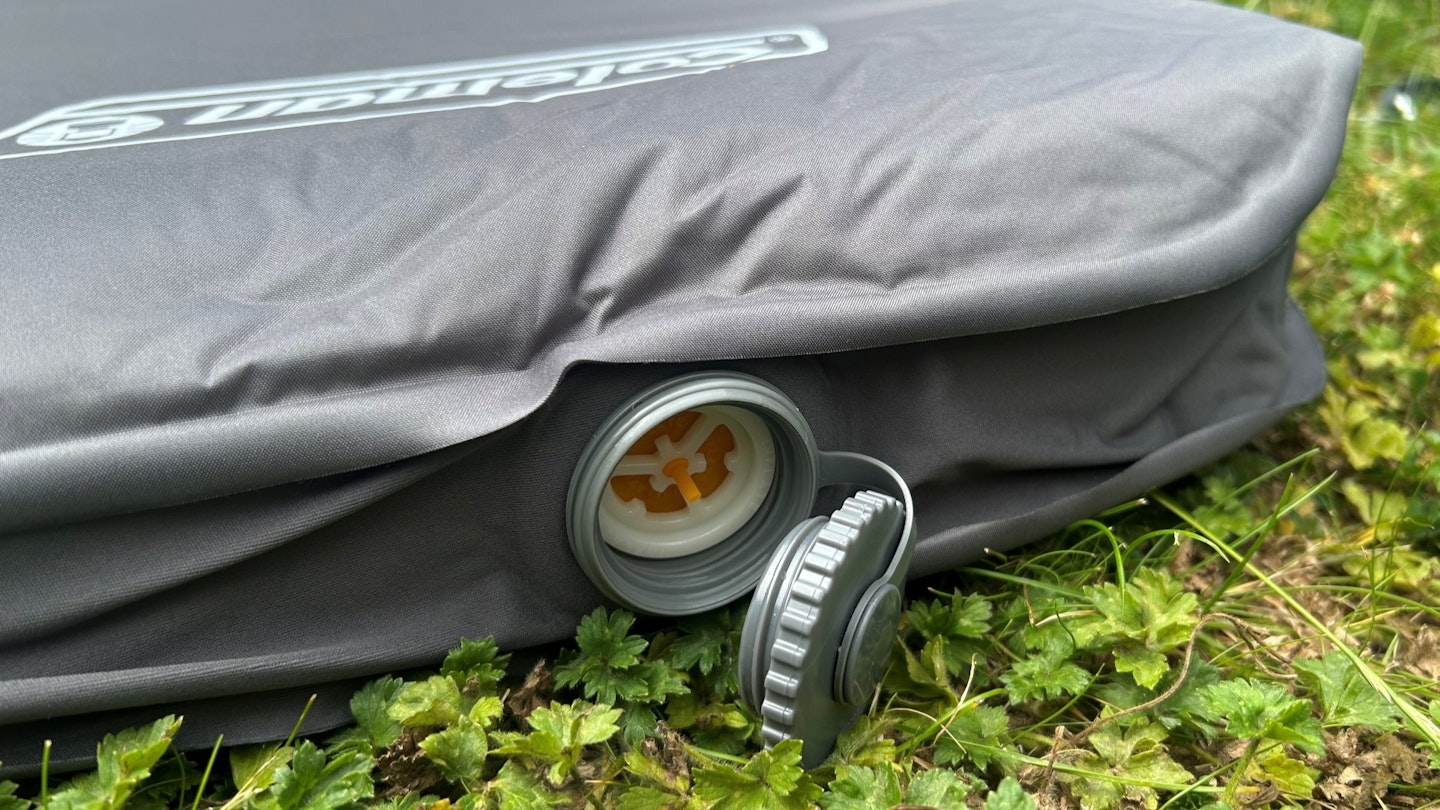
Here’s the really clever bit. Rather than having to finish the inflation process by blowing through the valves or using an additional pump, Coleman has designed the stuff sack so that it doubles up as a pump sack.
On one end of the sack is a hole that neatly slots into the inflation valve, while on the other is a drybag style rolltop closure. By rolling the top and trapping the air inside the sack, I was then able to squeeze it into the mattress by continuing to roll the sack up.
I only needed to do this a few times to get the mat to the desired firmness. It’s so easy and much less dizzying effort than blowing it up by mouth would have been.
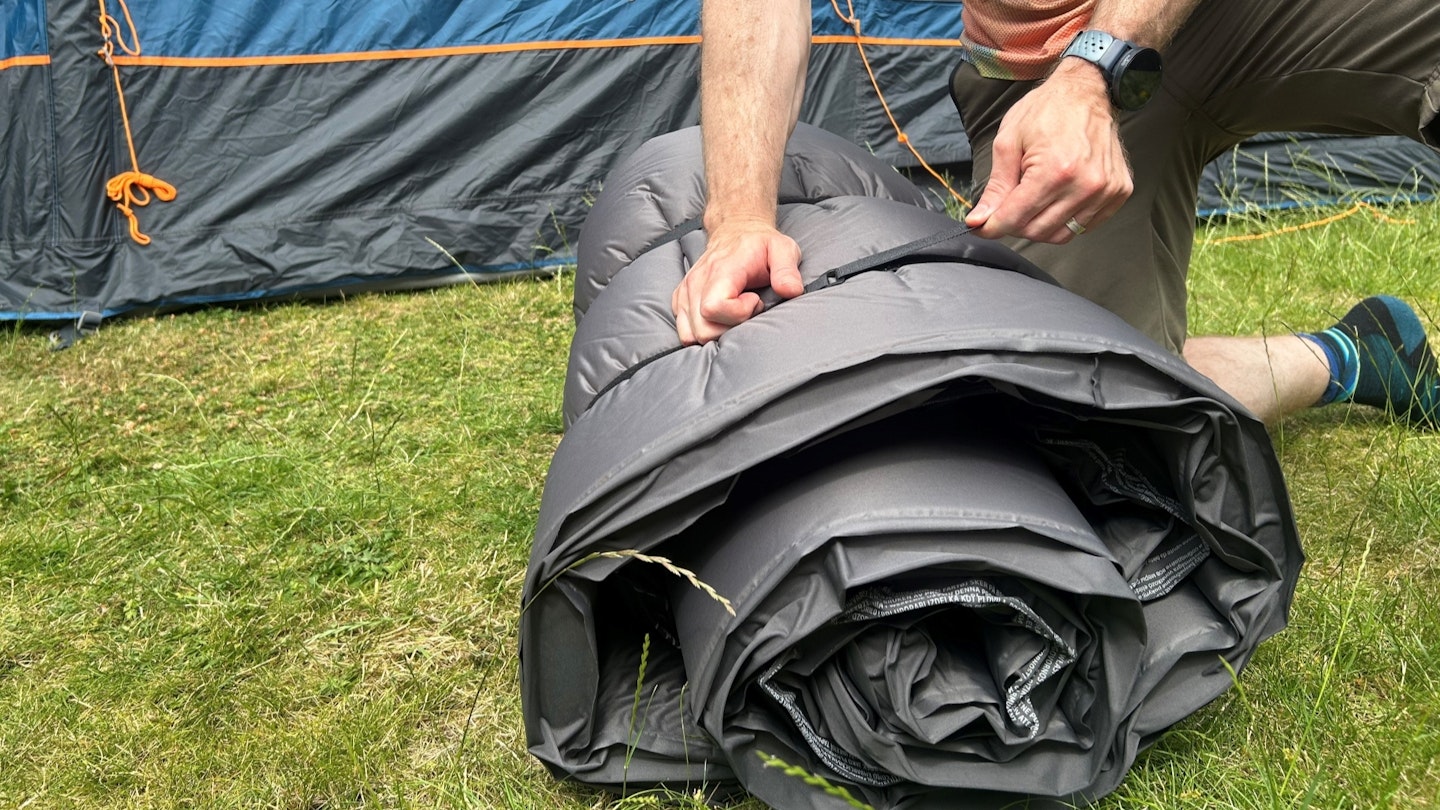
To deflate, the valve is reversed by turning the toggle to the… you guessed it: deflate setting. This allows air to escape and stops it from entering. I was able to systematically squeeze the air out by rolling the mat up.
It took a few goes and, though I got better with practice, it’s not the easiest self-inflating mat to fold away. Once I was happy with my tightly packed rolls of deflated material, I was able to secure it all with the provided Velcro-style straps. This is a real help, as it can be a little but tricky to coax the mat into its carry bag otherwise.
Warmth and R-value
The Supercomfort boasts an impressive R-value of 7.8. That's more than enough to cope with adventures in most seasons.
For the uninitiated, a sleeping pad or mattress' R-value is the measure of its thermal resistance, basically how well it insulates you from the chilly earth beneath your groundsheet. The higher the R-value the better the pad is at its insulating duties.
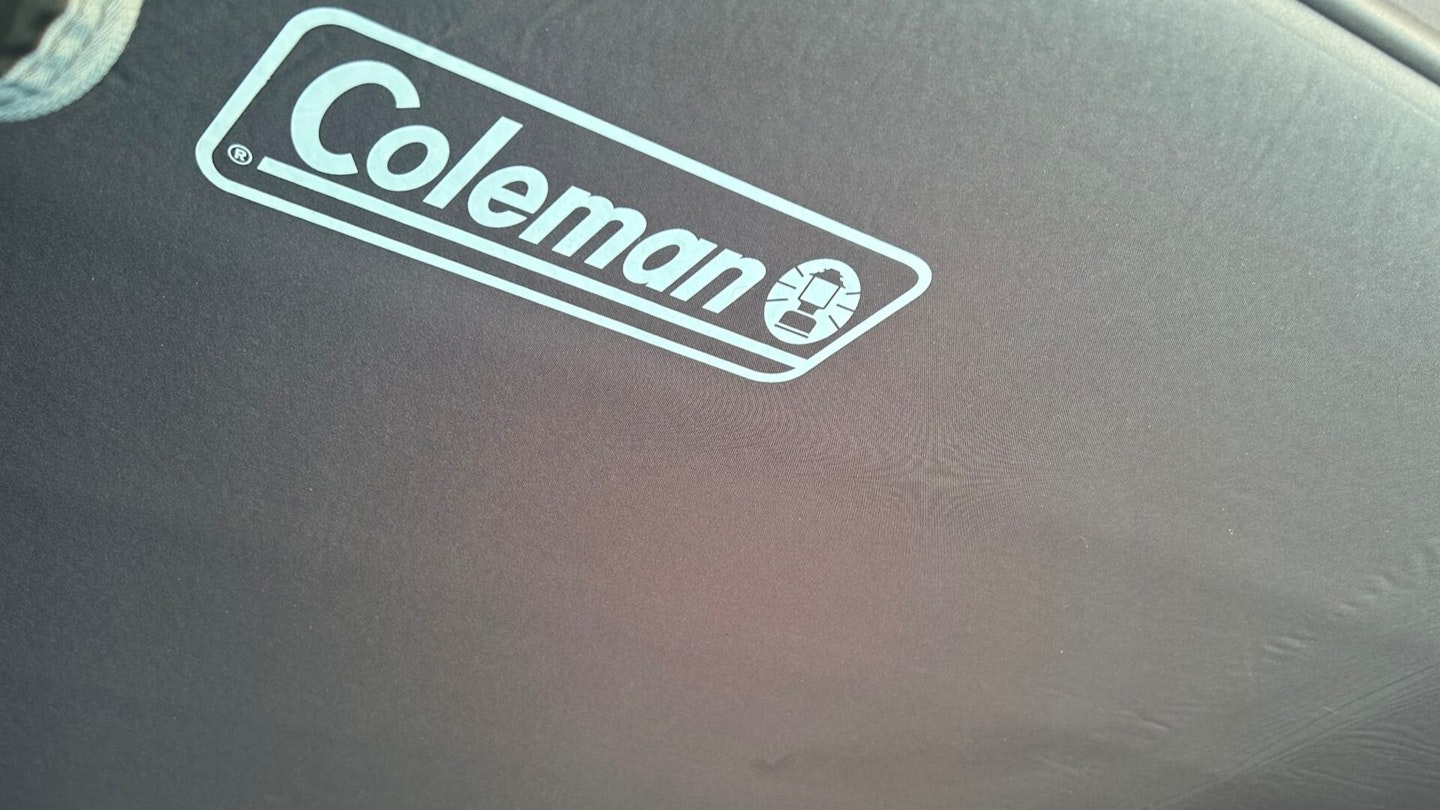
So, a high R-value means that a mattress can be used all year round. It’ll keep you insulated in the depths of winter, though this doesn’t make it unsuitable for the height of summer either. When considering the cost of the Supercomfort, this versatility adds to the value that you get for parting with your dosh.
If you were after an even better insulating mattress, the 12cm version’s R-value is stratospheric at 12.9. When hell freezes over, that’ll be the mat I’ll get.
Weight and packed size
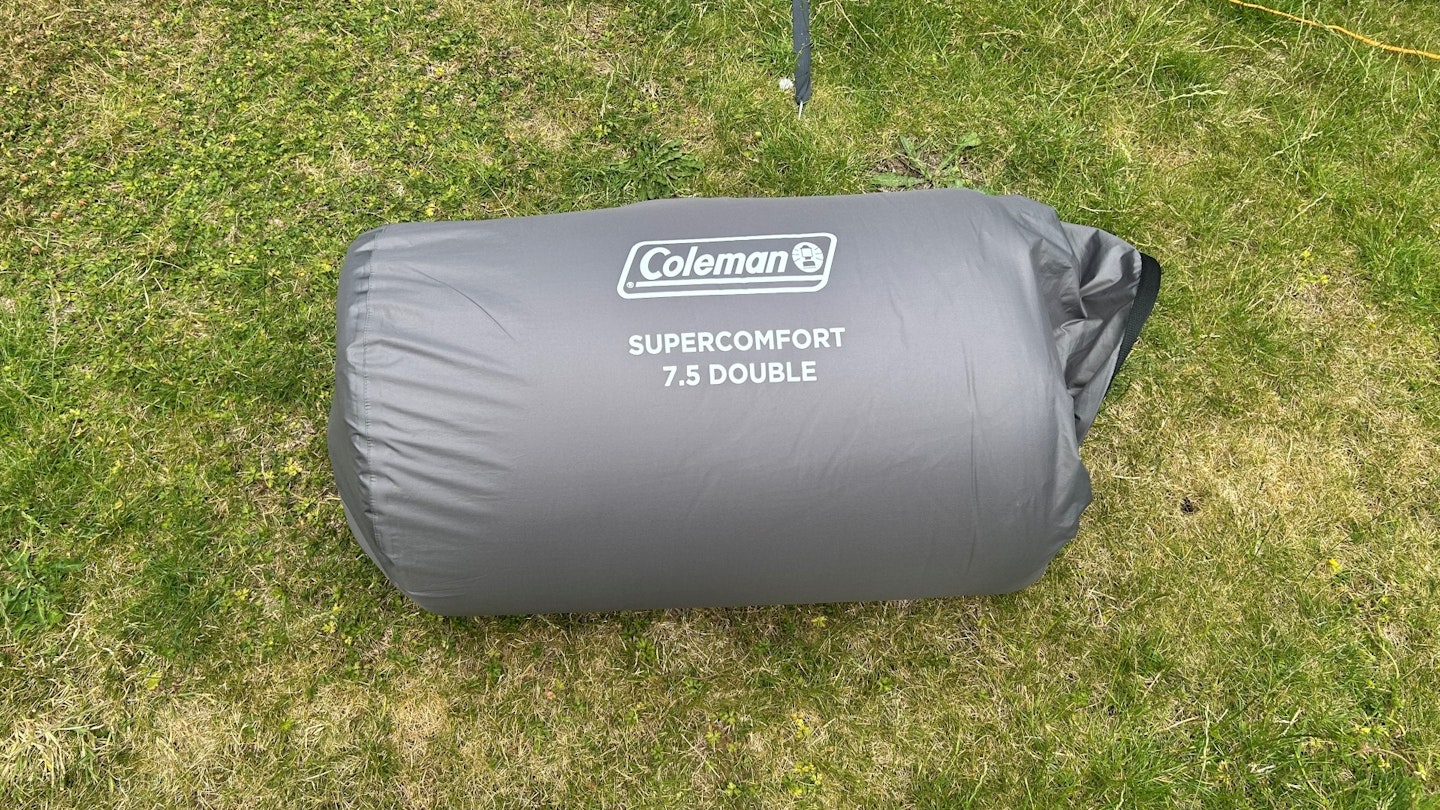
Of the double sleeping mattresses in our recent roundup, the 4.1kg Supercomfort is the lightest, around 500g less than the Berghaus Air Double. Of course, this is still on the heavy side compared to a backpacker’s sleeping pad, but car camping families and festival goers won’t be as fussed by the weight, as they won’t be carrying it any considerable distance.
The carry sack measures a considerable 66x36x36cm, another nail in the coffin for anyone thinking of taking it into the fells. However, for a double pad that offers at least some of the luxury of your bed at home, this is pretty small.
I like that the pack has a handle at its bottom, allowing me to pull the pack in the opposite direction to the mattress when liberating it. As mentioned, it’s not the easiest mattress to pack away, possibly to do with the roll top closure design of the stuff sack. However, as mentioned, I found that if I properly deployed the Velcro-style straps in order to hold the mats deflated rolls tightly together, it became a little easier.
Verdict
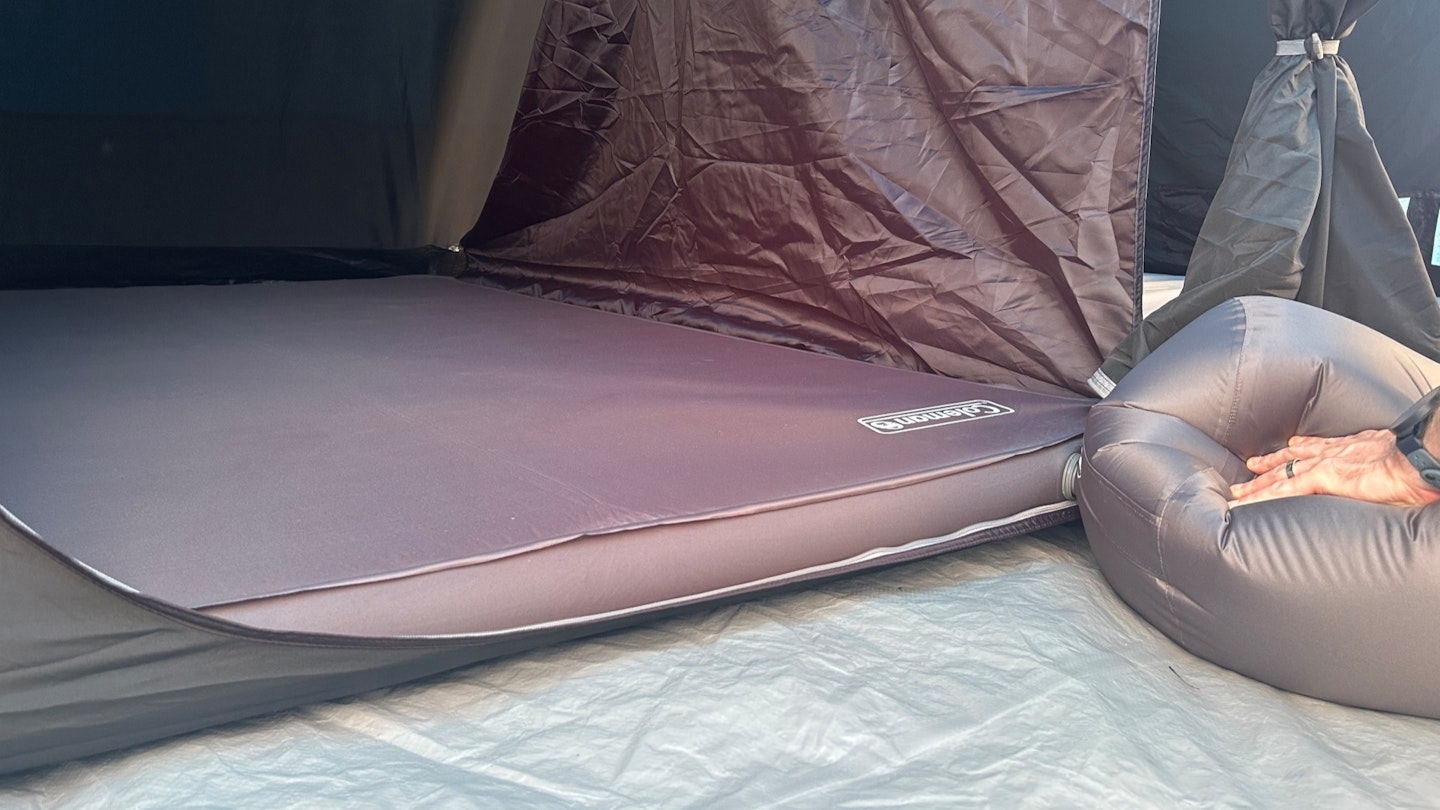
I’m really impressed with the Coleman Supercomfort Self-Inflating Sleeping Mat 7.5cm Double. It’ll stand you in good stead regardless of the season thanks to its high R-value, it’s a doddle to inflate and the way the stuff sack doubles as a pump sack is very clever. It also feels firm, flat and comfortable to sleep on, while it barely makes a noise either – all for a decent price. Great stuff.
Shop this product
About the author

As a qualified Mountain Leader, avid wild camper and a family man, Alex Foxfield enjoys camping in all its forms. An expert on all things outdoor gear, he’s been testing and reviewing backpacking can car camping kit for many years.




